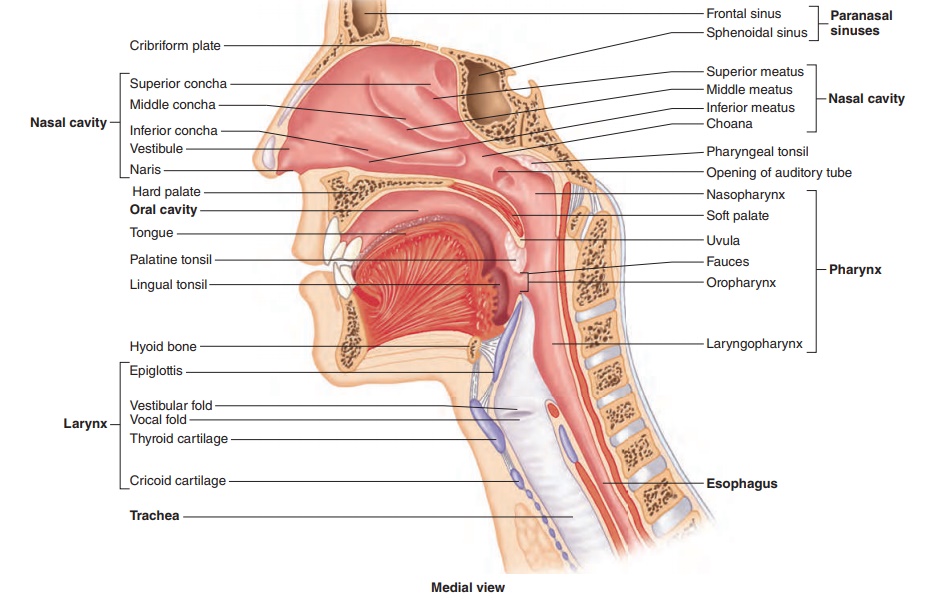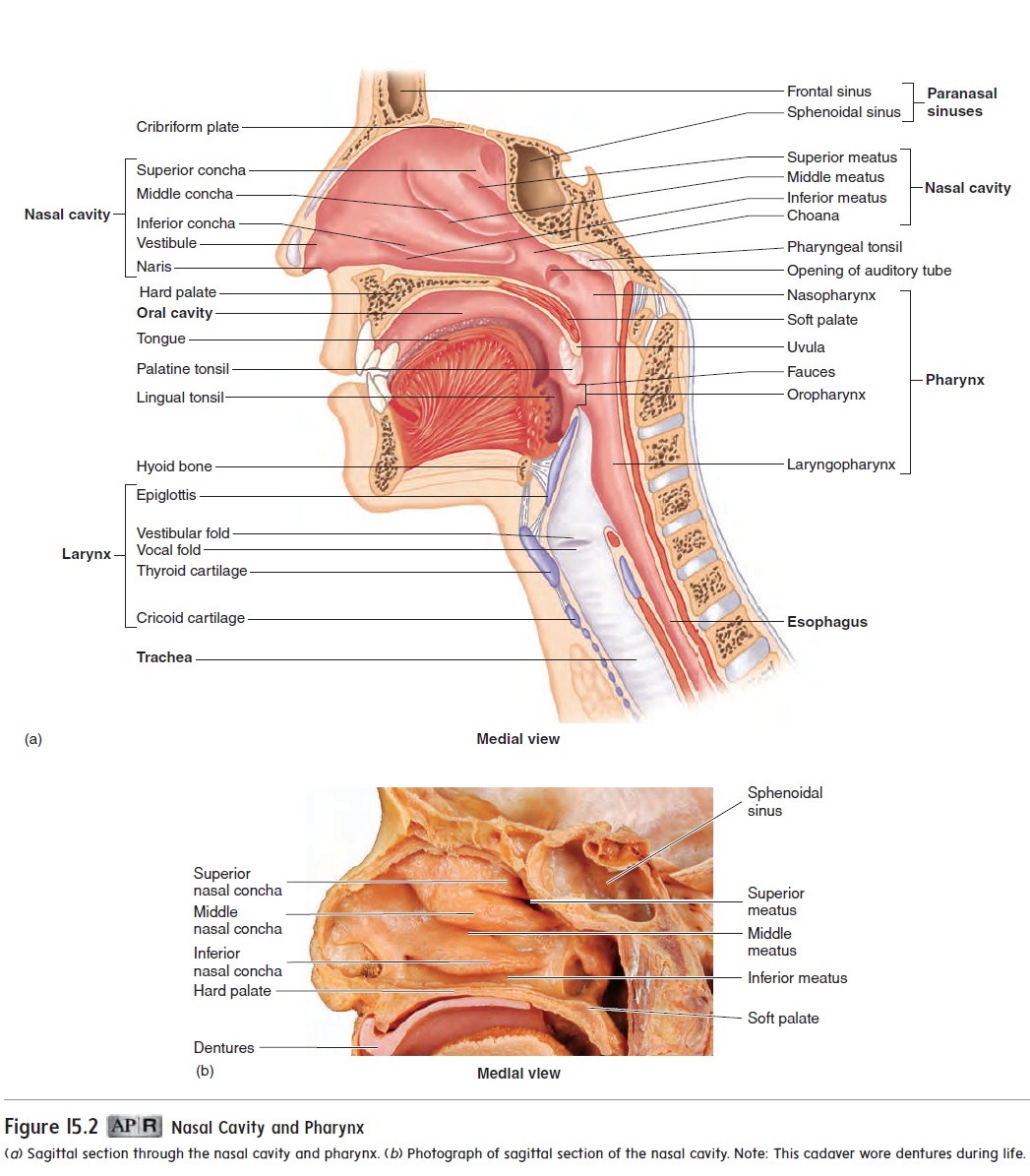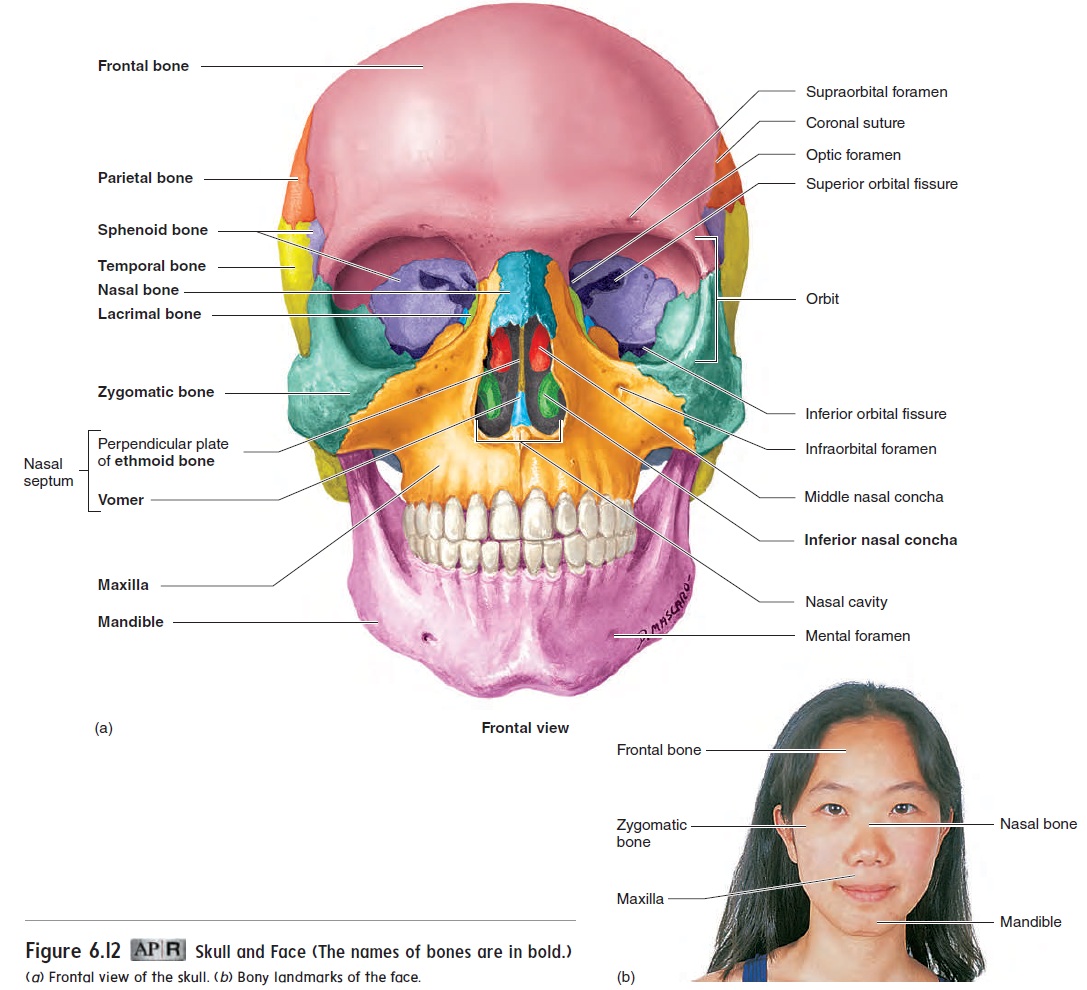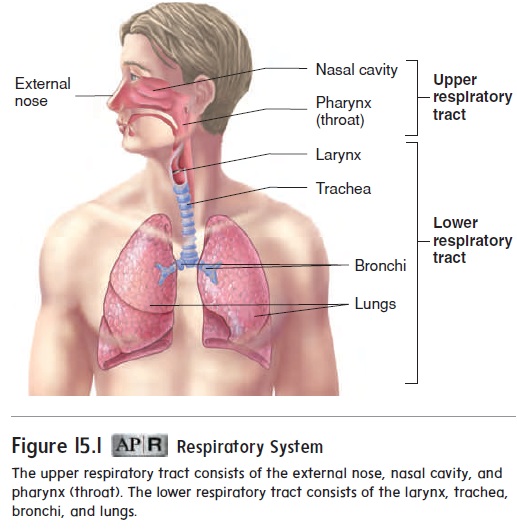Chapter: Essentials of Anatomy and Physiology: Respiratory System
Nose - Anatomy of the Respiratory System

Nose
The nose consists of the external nose and the nasal cavity. The external nose is the visible structure that forms a prominent fea-ture of the face. Most of the external nose is composed of hyaline cartilage, although the bridge of the external nose consists of bone (see figure 6.12). The bone and cartilage are covered by connective tissue and skin.
The nares (nā′ rēs; sing. nā′ris), or nostrils, are the external openings of the nose, and the choanae (k ō′ an-ē; funnels) are the openings into the pharynx. The nasal (nā′ zăl) cavity extends from

The nasal septum is a parti-tion dividing the nasal cavity into right and left parts. A deviatednasal septum occurs when the septum bulges to one side. The hard palate (pal′ăt) forms the floor of the nasal cavity, separat-ing the nasal cavity from the oral cavity. Air can flow through the nasal cavity when the oral cavity is closed or full of food.
Three prominent bony ridges called conchae (kon′ kē) are present on the lateral walls on each side of the nasal cavity. The conchae increase the surface area of the nasal cavity and cause air to churn, so that it can be cleansed, humidified, and warmed.

The paranasal (par-ă-nā′ săl) sinuses are air-filled spaces within bone. They include the maxillary, frontal, ethmoidal, and sphenoidal sinuses, each named for the bones in which they are located. The paranasal sinuses open into the nasal cavity and are lined with a mucous membrane. They reduce the weight of the skull, produce mucus, and influence the quality of the voice by acting as resonating chambers.
The nasolacrimal (nā-zō-lak′ ri-măl) ducts, which carry tears from the eyes, also open into the nasal cavity. Sensory receptors for the sense of smell are in the superior part of the nasal cavity .
Air enters the nasal cavity through the nares. Just inside the nares, the lining of the cavity is composed of stratified squamous epithelium containing coarse hairs. The hairs trap some of the large particles of dust suspended in the air. The rest of the nasal cavity is lined with pseudostratified columnar epithelial cells containing cilia and many mucus-producing goblet cells . Mucus produced by the goblet cells also traps debris in the air. The cilia sweep the mucus posteriorly to the pharynx, where it is swallowed. As air flows through the nasal cavities, it is humidified by moisture from the mucous epithelium and warmed by blood flowing through the superficial capillary net-works underlying the mucous epithelium.
The sneeze reflex dislodges foreign substances from the nasal cavity. Sensory receptors detect the foreign substances, and action potentials are conducted along the trigeminal nerves to the medulla oblongata, where the reflex is triggered. During the sneeze reflex, the uvula and the soft palate are depressed, so that rapidly flowing air from the lungs is directed primarily through the nasal passages, although a considerable amount passes through the oral cavity.
About 17–25% of people have a photic sneeze reflex, which is stimulated by exposure to bright light, such as the sun. Another reflex, the pupillary reflex, causes the pupils to con-strict in response to bright light. Physiologists speculate that the complicated “wiring” of the pupillary and sneeze reflexes are intermixed in some people, so that, when bright light activates a pupillary reflex, it also activates a sneeze reflex. Sometimes the photic sneeze reflex is fancifully called ACHOO, which stands for autosomal-dominant-compelling-helio-ophthalmic-outburst.

Related Topics